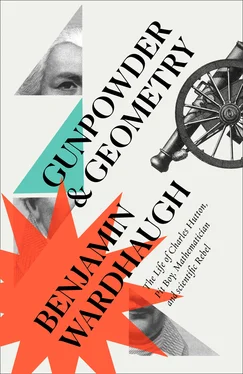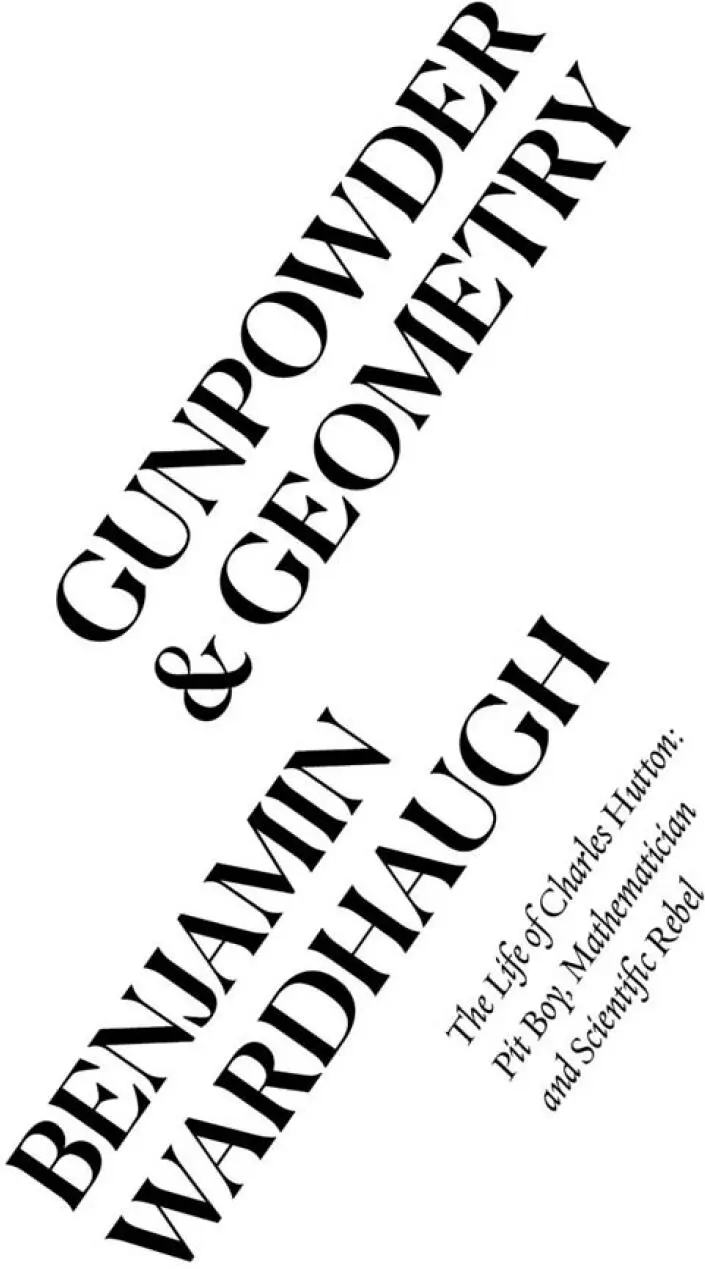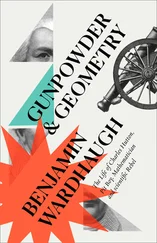
Copyright Contents Cover Title Page Copyright Dedication 1 Out of the Pit 2 Teacher of Mathematics 3 Author 4 Professor 5 Odd-Job Man 6 Foreign Secretary 7 Reconstruction 8 A Military Man 9 Utility and Fame 10 Securing a Legacy 11 Controversies Old and New 12 Peace Epilogue Notes Select Bibliography Image Credits Index Acknowledgements About the Author About the Publisher
William Collins
An imprint of HarperCollins Publishers
1 London Bridge Street
London SE1 9GF
www.WilliamCollinsBooks.com
This eBook first published in Great Britain by William Collins in 2019
Copyright © Benjamin Wardhaugh 2019
Cover illustrations: engraved illustrations of Artillery Carriages © bauhaus1000/Getty Images; engraving of Charles Hutton © Pictorial Press Ltd/Alamy Stock Photo.
Benjamin Wardhaugh asserts the moral right to be identified as the author of this work
A catalogue record for this book is available from the British Library
All rights reserved under International and Pan-American Copyright Conventions. By payment of the required fees, you have been granted the non-exclusive, non-transferable right to access and read the text of this e-book on-screen. No part of this text may be reproduced, transmitted, down-loaded, decompiled, reverse engineered, or stored in or introduced into any information storage and retrieval system, in any form or by any means, whether electronic or mechanical, now known or hereinafter invented, without the express written permission of HarperCollins
Source ISBN: 9780008299958
Ebook Edition © February 2019 ISBN: 9780008299972
Version: 2019-01-11
Dedication Contents Cover Title Page Copyright Dedication 1 Out of the Pit 2 Teacher of Mathematics 3 Author 4 Professor 5 Odd-Job Man 6 Foreign Secretary 7 Reconstruction 8 A Military Man 9 Utility and Fame 10 Securing a Legacy 11 Controversies Old and New 12 Peace Epilogue Notes Select Bibliography Image Credits Index Acknowledgements About the Author About the Publisher
In memory of Jackie Stedall
Contents
Cover
Title Page
Copyright
Dedication
1 Out of the Pit
2 Teacher of Mathematics
3 Author
4 Professor
5 Odd-Job Man
6 Foreign Secretary
7 Reconstruction
8 A Military Man
9 Utility and Fame
10 Securing a Legacy
11 Controversies Old and New
12 Peace
Epilogue
Notes
Select Bibliography
Image Credits
Index
Acknowledgements
About the Author
About the Publisher
1
Out of the Pit

August 1755. Newcastle, on the north bank of the Tyne. In the fields, men and women are getting the harvest in. Sunlight, or rain. Scudding clouds and backbreaking labour.
Three hundred feet underground, young Charles Hutton is at the coalface. Cramped, choked with dust, wielding a five-pound pick by candlelight. Eighteen years old, he has been down the pits on and off for more than a decade, and now it looks like a life sentence. No unusual story, although Charles is a clever lad – gifted at maths and languages – and for a time he hoped for a different life.
Many hoped. Charles Hutton, astonishingly, would actually live the life he dreamed of. Twenty years later you would have found him in Slaughter’s coffee house in London, eating oysters with the president of the Royal Society. By the time he died, in 1823, he was a fellow of scientific academies in four countries, while the Lord Chancellor of England counted himself fortunate to have known him. Hard work, talent, and no small share of luck would take Charles Hutton out of the pit to international fame, wealth, admiration and happiness. The pit boy turned professor would become one of the most revered British scientists of his day.
This book is his incredible story.

Newcastle upon Tyne occupies a fine site for a town: a long south-facing slope, down towards the river. The Great North Road runs through it: 90 miles north to Edinburgh, 250 south to London. And the river joins the town to the world. As the old song goes,
Tyne river, running rough or smooth,
Brings bread to me and mine;
Of all the rivers north or south
There’s none like coaly Tyne.
By the time coaly Tyne passes under the bridge at Newcastle it has seen the Pennines and the wild country of Northumbria: land fought over by the Romans and the Picts, the English and the Scots. If the water had once been dyed with their blood, by now it was dyed with coal.
The town was spacious and populous. Only three English towns were bigger; but still Newcastle was no sprawl early in the eighteenth century. Just five main streets within the old town walls, and open country beyond them to east and west.

We know next to nothing about Charles Hutton’s parents, Eleanor and Henry. It’s probable they moved to prosperous, growing Newcastle from elsewhere: possibly from Westmorland, on the other side of the Pennines.
Eleanor and Henry seem not to have prospered in any tremendous way in Newcastle, though neither were they at the bottom of the heap. Henry was a ‘viewer’ in the collieries: something less, that is, than a land steward or estate agent, and something more than a manual labourer. Viewers were literate, numerate men who kept the colliery’s records and compared notes with their colleagues at neighbouring mines. They measured and calculated rates of production, kept an eye on how fast the pit was filling with water and how well the pumps were coping. They allocated labour, planned, inspected. Some stayed up at night to catch coal thieves.
Viewers were expected to be down the pits daily, but also to see the estate agent daily. They faced two very different worlds: the wealthy owners and the men who hewed the black diamonds out of the rock beneath their feet. They had responsibility and power; some abused it, keeping owners ignorant about the mine work. Many used their position to command high fees. The coal industry was expanding, and new shafts and new mines depended on the advice of experienced colliery viewers. High-end viewers had their own assistants and apprentices: minor deities in their own field.
One source says Henry Hutton was a land steward for Lord Ravenscroft, a step further up still. We don’t know if it was true, and it may just be a garbled reflection of the fact that he oversaw a mine or mines on that nobleman’s land in Northumberland. Either way, he was a man who had a good deal more than the very minimum.
By 1737 Eleanor and Henry lived with their children – three or four boys, perhaps more – in a thatched cottage on the northern edge of Newcastle. Nineteenth-century historians would be rather sniffy about this ‘low’ dwelling (low, probably, both literally and metaphorically); but compared with the cottages of the miners themselves it was luxury. Thatch, indeed, was a luxury, as was the ability to live more than a stone’s throw from the pit mouth.
Читать дальше
















